Índice Contenido
The Palacio de Viana has twelve unique courtyards and a magnificent garden, making it a totally special palace, with different species of flowers perfuming every part of the museum. Sophia of Lancaster, the last Marquise of Viana, maintained the origin of the palace dating back to the 14th century.
In it you can find a large collection of paintings, mosaics, firearms of the time … and even crockery. This museum takes you back to earlier times, making the visit to the Palacio de Viana something unforgettable and enriching.
You can find in its large library from the sixteenth to the eighteenth centuries the collection of guadamecíes.
On this page you will find all the information about this emblematic palace.
Opening hours of the Palacio de Viana
The opening hours of the Palacio de Viana in winter from September 1 are:
Tuesday-Saturday: from 10:00 to 19:00 hours.
Sunday: from 10:00 to 15:00 hours.
Monday: closed.
Opening hours of the Palacio de Viana in summer (July and August):
Tuesday-Sunday: 9:00 am to 3:00 pm.
Monday: closed.
Viana Palace entrance fee
The entrance fee to the Viana Palace is:
Combined visit: €10.
Visit to the palace and collections: 6 €.
Visit to the courtyard collection: 6€.
On Wednesdays, the visit is free of charge to the courtyard collection and institutional area of the palace, from 14:00 to 17:00. In July and August, it is free from 14:00 to 15:00.
When is the entrance to the Palacio de Viana free of charge?
Admission to the Palacio de Viana is free when:
Under 10 years old.
Holders of the Junta sixty-five gold card.
People with disabilities.
Official tourist guides.
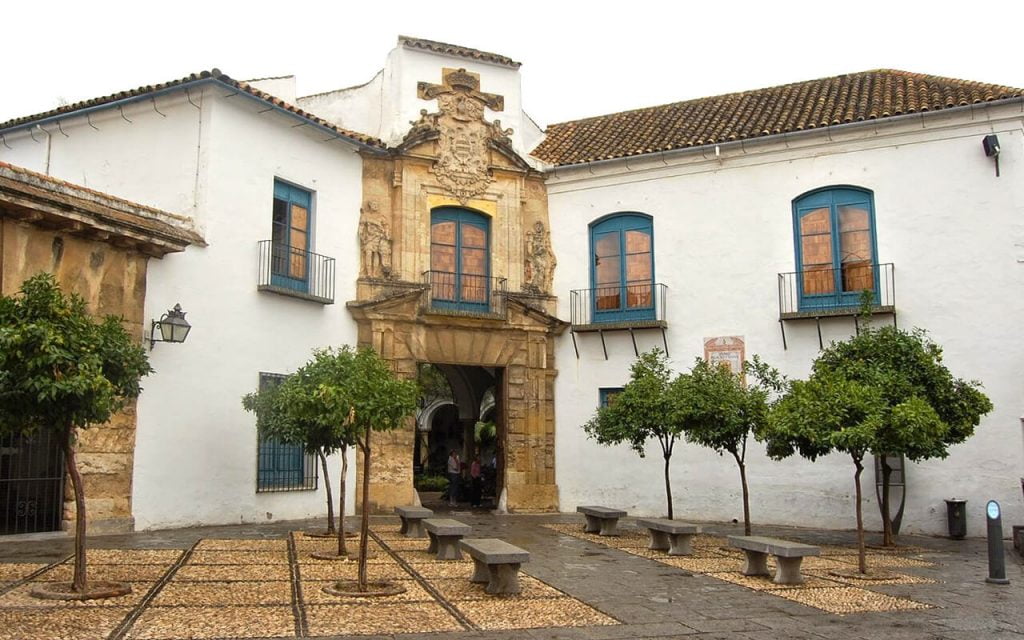
How to get to Palacio de Viana
The Palacio de Viana is located at Plaza de Don Gome, 2, 14001 Córdoba. To get to the Palacio de Viana, you can take bus 04, bus 01, or bus 02 with a change on bus 06.
History of the Palacio de Viana
The Palacio de Viana dates back to the 15th century, where the first mention of this building appeared in a document. Its name comes from a noble title, more specifically a marquisate called “Viana”. The first Marquis of Viana was Teobaldo Saavedra, appointed by Alfonso XII.
The Palace belonged to Gómez Suárez de Figueroa, Lord of Villaseca. The title of Palacio de Viana was given at the end of the 19th century.
After passing through seventeen different owners, Sofia Amelia de Lancaster y Bleck, third Marquise of Viana, sold this unique palace to the Caja Provincial de Ahorros de Cordoba in 1980.
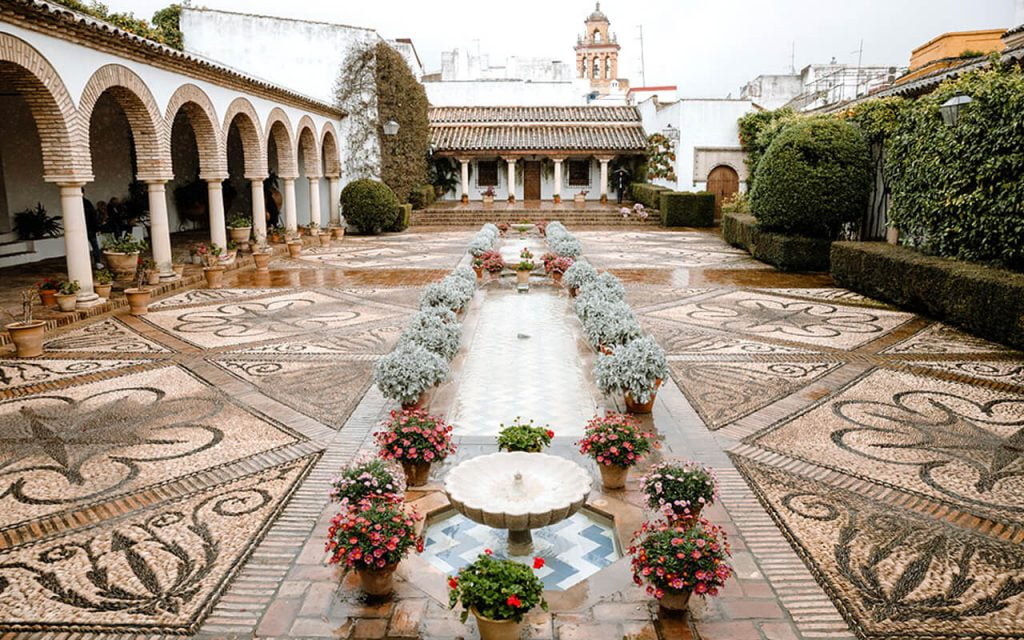
Courtyards of the Palacio de Viana
The courtyards of the Palacio de Viana are a total of 12. They are divided into different styles, floral species and designs. The courtyards of the Palacio de Viana are:
Patio de las Rejas
One of the best known courtyards of the Palacio de Viana. Its opening to the outside through a mannerist architecture is perfect for public view as it allows to show the position of the owners of the palace.
It was created to satisfy the Renaissance nobility, where even the architecture is more important than the flowers. Its three mannerist openings closed with wrought iron grilles were made in 1624 by Bartolomé de los Reyes y Cueto. It communicates with the Patio del Archivo, due to a remodeling of the 18th century.
Patio de los Gatos
The Patio de los Gatos is documented as the oldest in Cordoba. It belonged in earlier times to the houses of the Puentezuela de Tres Caños, houses that occupied the southern corner of the current palace.
At the end of the 19th century, it was known as the Patio de las Cocinas because kitchens were installed in the adjoining areas and this patio was a service area.
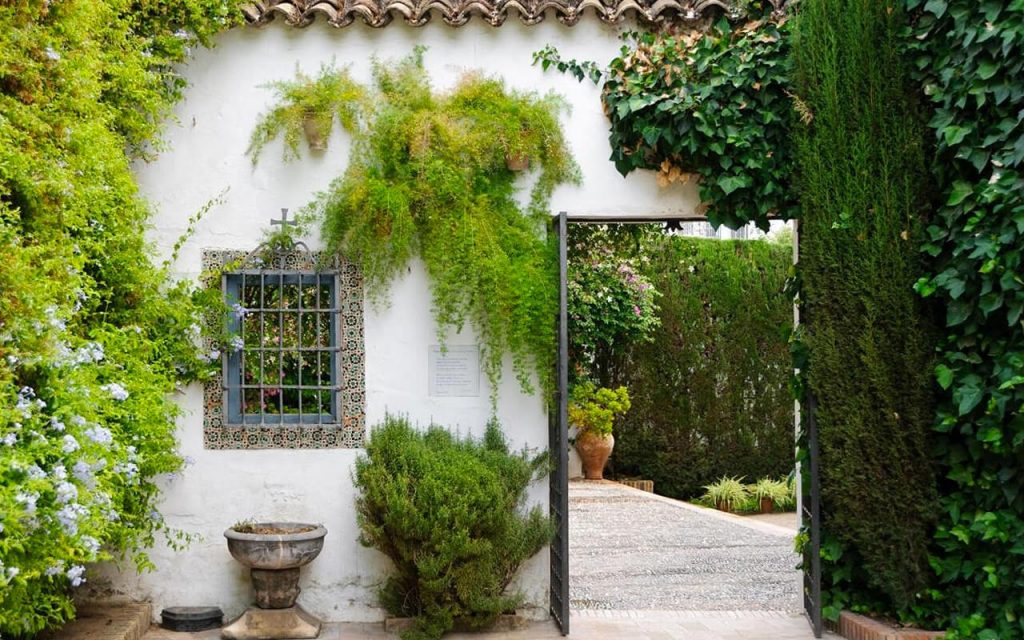
Orange Tree Courtyard
It is part of the original core of the palace in the fifteenth century, being an access point to the enclosure.the Patio de los Naranjos shows the Muslim tradition of the garden-orchard. For the Muslims, the garden was a private place, using flowers, fruit trees and water as the main decorative element. To this, agricultural functions were added to take advantage of the land used.
Receiving Yard
The reception courtyard is the main access to the palace. Its main function was to impress and demonstrate the nobility. One of its greatest charms is the fusion of great architecture with the use of gardening.
Courtyard of Columns
Built in the eighties, it is a place to host events in order to provide visitors with a unique space.
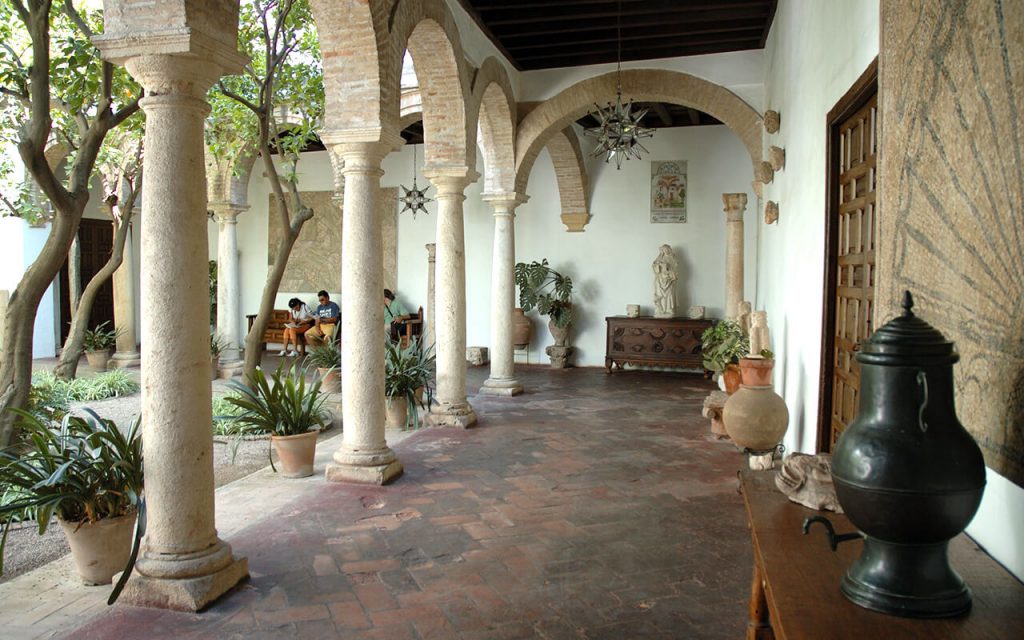
Madame’s Courtyard
It had a reform in the eighteenth century, although until the twentieth century did not include its greatest hallmark, the cypresses with a great architecture that makes them very special. It can be seen from the interior, especially from the Admiral’s bedroom.
Its name comes from the naiad of the fountain, which were water nymphs in Greek mythology. Topiary art.
Courtyard of the Pozo
The courtyard of the Pozo has a very important role in the Palacio de Viana, and it is from this well that water is taken from the Colodro stream, thus supplying all the floors of the palace. The III Marquise of Viana incorporated different decorative elements to the well to give it a more stately appearance.
Patio de la Alberca
This courtyard may be the most modest of the entire Viana Palace. Service courtyard, once known as the Deer Courtyard. In the pool the water is aerated and then used for irrigation.
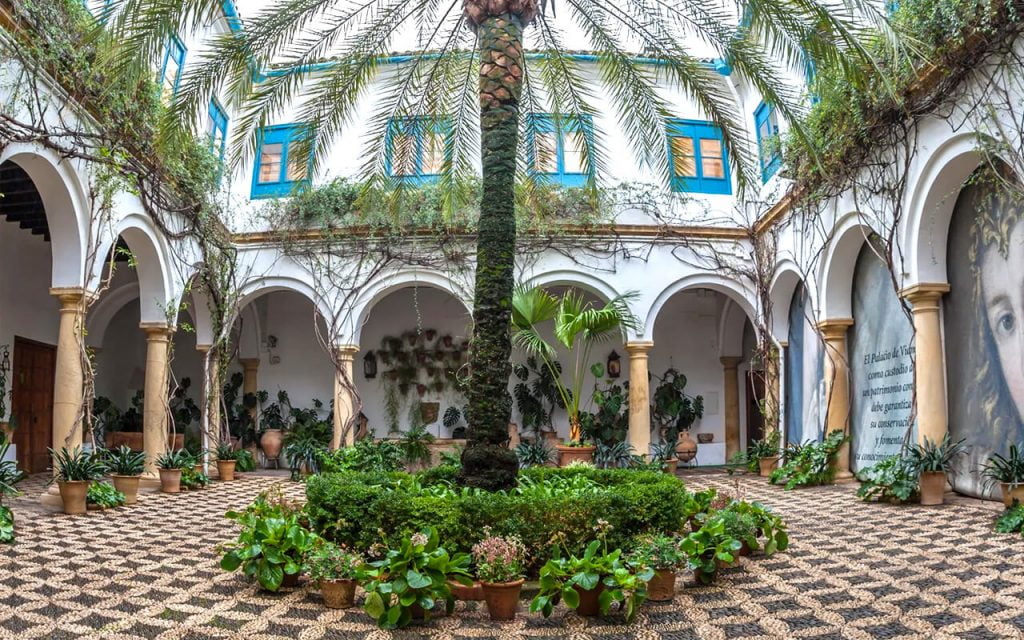
Gardeners’ Courtyard
In it, there is a room in which the objects of gardening are stored, and for that reason it received this name. Its present appearance is due to the remodeling given to it by the III Marquise of Viana. Decoration with tiles and wall covered with celestine.
La Cancela Courtyard
This courtyard leads to the Palacio de Viana. It was the access to the house of the Counts of Torres Cabrera, which the owners of the palace acquired in the 19th century. It is different from the other courtyards, especially for its brick walls with wrought iron balconies.
Chapel Courtyard
This courtyard was the main courtyard of the houses of the counts of Torre Cabrera. Its name is due to the fact that it had a chapel attached to the courtyard, which was moved to the reception by the III Marquise of Viana. Today it has recovered its original location.
Archive Courtyard
Cordovan Baroque style in the interior area of the palace. On the mezzanine is one of the most important places of the palace, the historical archive of Viana, which has more than 400,000 documents, finding here archives of the twelfth century.

The palace house of Viana
The palace house of Viana was a manor house from the fifteenth to the nineteenth century, passing from the manor to the marquisate of Villaseca. In 1873, Don Teobaldo Saavedra son of the Duke of Rivas married the IX Marquise of Villaseca, and it was not until 1980 when the III Marquise of Viana sold the house to the Provincial Savings Bank of Cordoba, now known as Cajasur.
Frequently asked questions about the Palacio de Viana
How many patios does the Palacio de Viana in Cordoba have?
The Palacio de Viana has 12 different patios spread throughout the palace.
When was the Palacio de Viana built?
The Palacio de Viana was built in 1843.
How long does it take to see the Palacio de Viana?
It takes approximately 90 minutes to see the Palacio de Viana.

